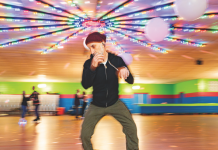DECEMBER MORNINGS all unfold roughly the same way for Bob Kempenich, manager of a SuperAmerica in St. Cloud. He rolls into work around 6 a.m. Mid-morning, he goes out to scrape ice from the pumps. Late-morning, he comes in and heats up the hamburger he’s brought from home. But one Monday, before the microwave beeped, he turned white and collapsed.
His odds of surviving were less than 1 in 20.
Cardiac arrest is the leading cause of death in America. When it strikes, at least three actions must be taken to render you whole again. You need swift and correctly administered CPR, a shock to the heart, and speedy transport to a hospital that can give immediate comprehensive care.
Keith Lurie, a cardiologist who aims to “reset the boundary between life and death,” has convinced leaders to include St. Cloud in a national project (with Austin, Texas, and Columbus, Ohio) to improve cardiac-arrest survival rates. Dubbed “Take Heart America” and funded by grants, the project is arming St. Cloud with CPR devices and educating the populace. The goal: if your heart fails anywhere in St. Cloud, someone will get you to the next stage in the resuscitation chain.
How does a city do it?
First, train the foot soldiers. Every ninth grader in St. Cloud now learns CPR via an inflatable mannequin called Mini-Anne. Class ends with an assignment: go home and train at least two people. Ninth-grader Kirby Statz doesn’t always do his homework, his mother reports, but he taught his parents CPR immediately. “You can tell a kid something 50 times and it won’t mean anything until he’s responsible for teaching someone else,” says Heather Statz-Urseth. “Then he really learns it.”
Second, train the reserves. PTAs and social organizations are lining up expert speakers. This after Bernice Johnson, a Rotary member’s wife, collapsed at the club’s Christmas party. Two doctors who were present declared her dead. But an ambulance driver partying in another room revived Johnson with CPR. She will learn CPR herself at an upcoming Rotary meeting.
Third, provide the weaponry. Lurie’s team hopes to put defibrillators in all buildings where people gather. Most communities have them only in airports and hospitals. “Take Heart America” has placed about 90 defibrillators and has another 20 to offer.
Fourth, train the commanding officers. Emergency workers are taught state-of-the-art resuscitation techniques and can be at the scene within three minutes. Every police car, ambulance, and fire engine will contain a device that doubles blood flow during CPR.
Important as these measures are, patients ultimately need a hospital with top post-resuscitation care. St. Cloud Hospital was the first in Minnesota to report “cooling” a cardiac victim—Bob Kempenich—by inducing hypothermia for a day to prevent neurological damage. He survived, and the hospital now has successfully cooled more than 25 others, spurring at least six other Minnesota hospitals to create cooling protocols.
Outcomes of “Take Heart America” will be tracked for two years. Success in St. Cloud may generate a road map that offers new hope for cardiac-arrest victims. In the meantime, if you’re unlucky enough to suffer cardiac arrest, you should be lucky enough to find yourself in St. Cloud.
Judy Kogan is a Minneapolis freelance writer.







